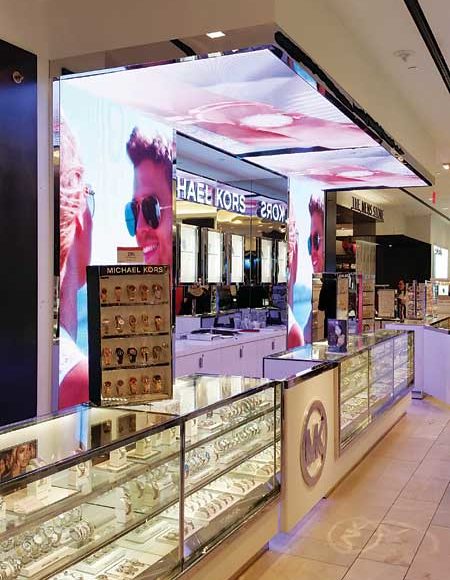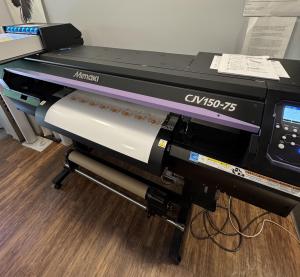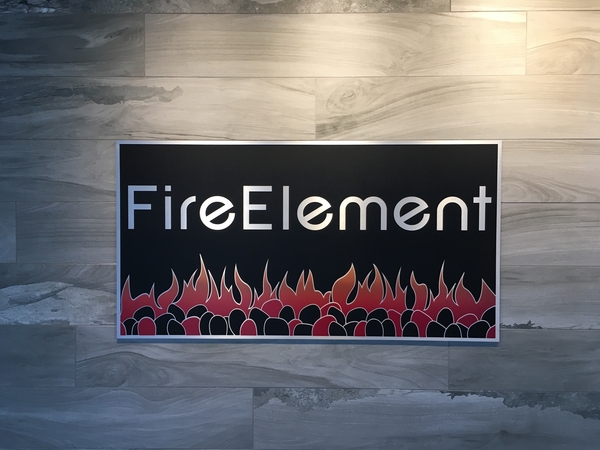Wayfinding: Best practices in retail

Photo courtesy Craig M. Berger
Marketing and promotion
Marketing departments have an outsized impact on wayfinding signs in retail environments. With access to high-quality large-format digital printing, they have worked in recent years to turn promotion into part of the wayfinding process, with large-scale marketing materials integrated into lightboxes, fixtures and windows.
The growth in large-format printed graphics has also resulted in ‘mergers’ between industries. The packaging and fixtures industries, for example, have combined their efforts to better control how products are displayed in stores, with less need for intervention by in-store personnel. Trade show exhibit fabricators have found new opportunities in the retail sector by developing pop-up stores and branded pavilions.
Branded environments
Eva L. Maddox was the first designer to coin the term ‘branded environment’ in reference to the integration of branded communications in EGD. She designed spaces for corporations, universities and hospitals until she retired in February 2016.
Closely aligned with the aforementioned discipline of experience design, branded environments have evolved with explorations of architecture, materials and space to reinforce corporate and institutional identities. In the retail sector, this evolution has resulted in stores that share design attributes with other types of facilities, including airports, offices and residential buildings. As such, signs and other wayfinding elements for these stores have been specified for greater permanence and tightly integrated with interior decor.
Digital signage
In the last decade or so, digital retail technology has grown into a multi-billion-dollar industry unto itself, affecting every aspect of the buying and selling experience. Many retailers have worked to develop proprietary systems that link their websites, inventory logistics and in-store purchasing into one seamless whole.
Extending these systems to digital signage, however, has not always been so straightforward. Beyond front-of-store and key ‘landmark’ digital signs, in-store networks have been somewhat difficult to develop because of high upfront costs, along with those for ongoing management.
That said, digital signage has made significant headway with content-intensive retailers, including those specializing in electronics and communications products. The next frontier for these systems will be interactive digital signage, whereby customer behaviour and specific purchases will affect on-screen content. Indeed, many retailers believe responsive content will allow them to truly realize the potential value of their investments in digital signage technology.
Craig M. Berger is chair of the visual presentation and exhibition design department of the Fashion Institute of Technology’s (FIT’s) School of Art and Design. This article is based on a project spearheaded by the Sign Research Foundation (SRF), a charitable non-profit organization that supplies academic research on effective sign strategies, systems and codes and facilitates dialogue between architects, urban planners, developers, code officials, business owners and designers to help support more navigable cities, thriving businesses and strong urban identities. For more information, visit www.signresearch.org.





